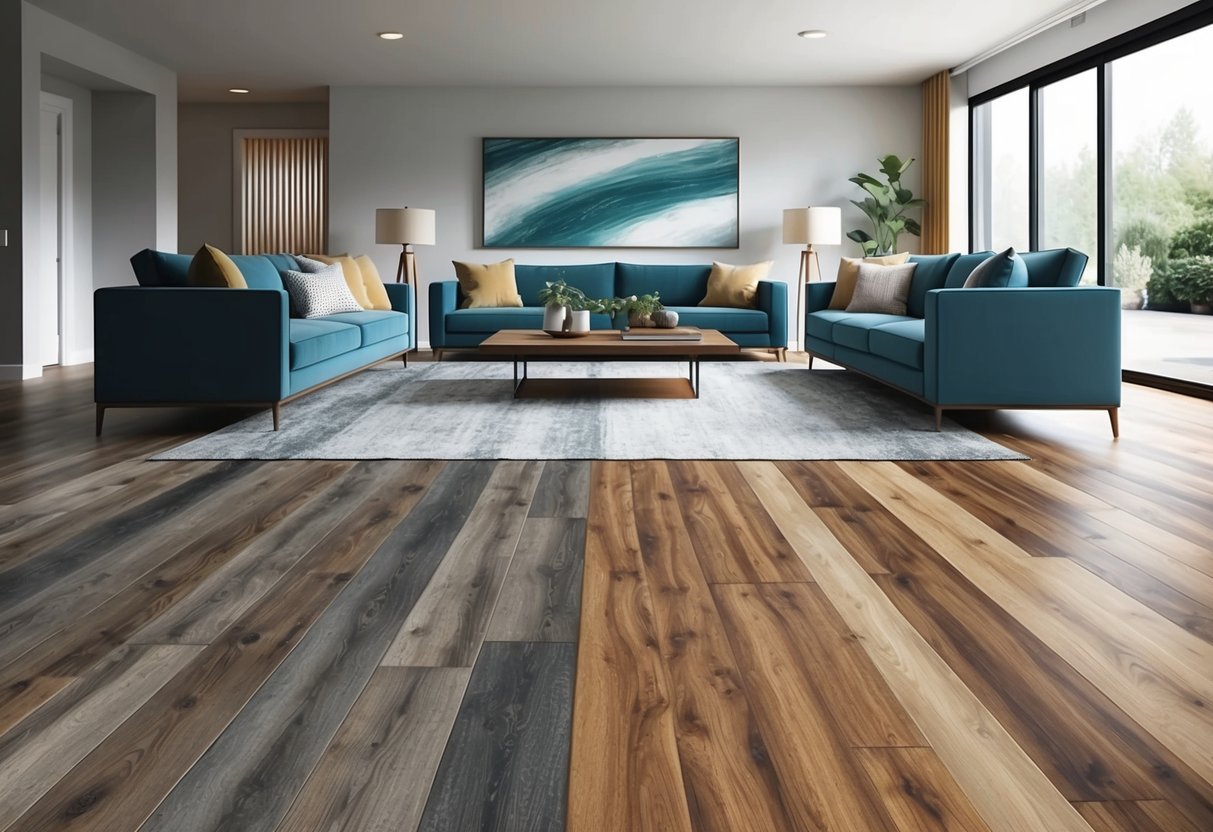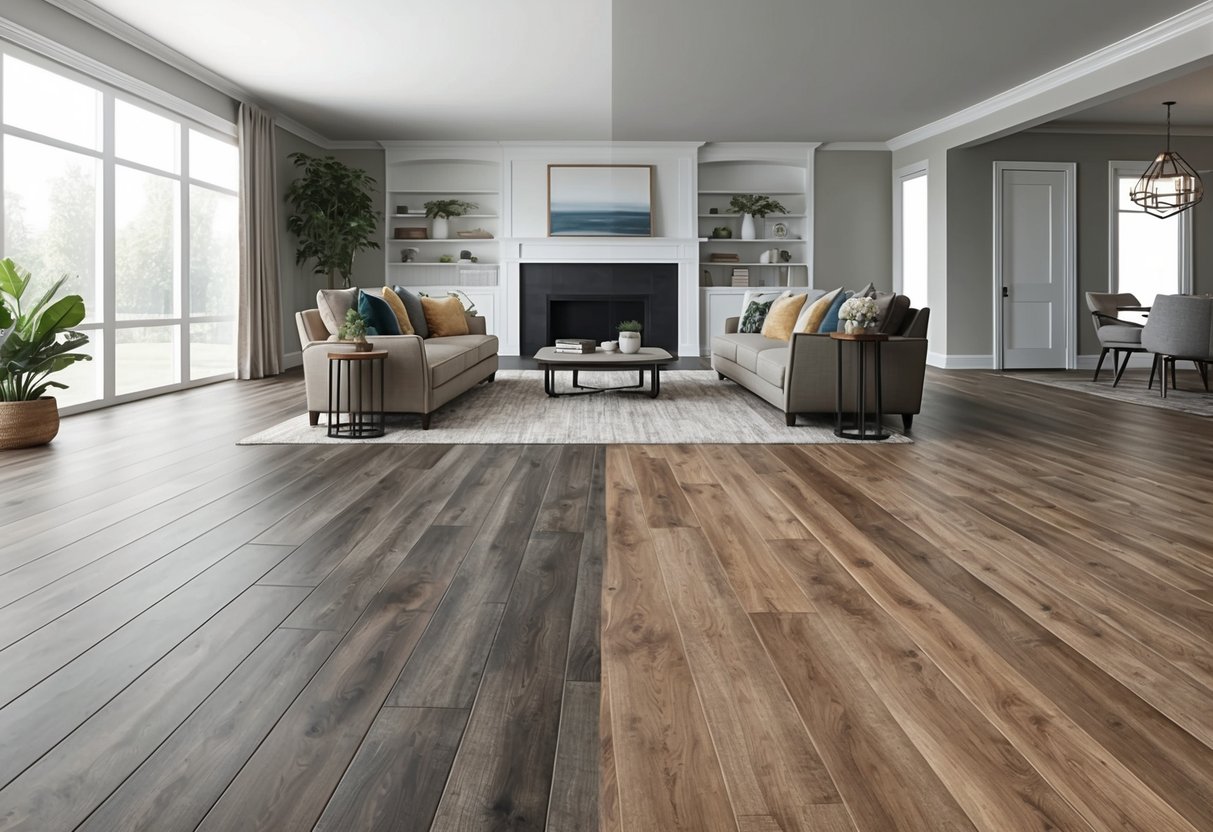
Maintenance and Care Requirements

Both hardwood and luxury vinyl plank (LVP) flooring require regular attention to maintain their appearance and extend longevity. The care process, product recommendations, and repair methods differ by material, impacting convenience and long-term upkeep efforts.
Routine Cleaning
Hardwood flooring needs frequent sweeping or vacuuming to remove dust and debris that can cause scratches. It benefits from periodic mopping with cleaners specifically formulated for wood, as excess water or harsh chemicals can damage the finish and wood fibers.
Over time, wear and tear may require refinishing, which involves sanding and applying a new protective layer to restore appearance. Luxury vinyl plank flooring is easier to maintain on a daily basis.
Regular sweeping and occasional damp mopping with mild, non-abrasive cleaners are typically sufficient. LVP is resistant to moisture and does not require refinishing like hardwood.
This makes vinyl flooring a practical choice for busy homes and spaces prone to spills or humidity. For many homeowners, the low-maintenance nature of LVP is a key advantage over hardwood, especially in high-traffic areas.
Dealing with Stains and Spills
Hardwood floors are susceptible to stains if spills are not wiped up quickly. Liquids can seep into seams or small scratches, potentially leading to staining or warping.
Immediate blotting with a dry or slightly damp cloth is recommended. For stubborn stains, specially designed wood floor cleaners may help, but deep damage might require professional treatment or refinishing for best results.
Luxury vinyl plank offers superior resistance to stains and water damage compared to wood. Most spills can be easily wiped off without concern for lasting marks or swelling.
Common stain sources like food, beverages, or pet messes are usually no threat if addressed promptly. For tougher marks, gentle cleaning products designed for vinyl flooring are effective and unlikely to harm the surface, making care straightforward and stress-free.
For more tips and detailed care instructions, review industry recommendations about maintaining LVP and hardwood surfaces.
Installation Methods and DIY Suitability
Luxury vinyl plank (LVP) and hardwood flooring offer different installation experiences, both in terms of complexity and time investment. Understanding these differences helps homeowners choose an option suited to their skills, schedule, and project goals.
Click and Floating Installation
Luxury vinyl plank frequently uses a click-lock system for installation. This method involves connecting planks together at the edges so they snap into place, forming a secure seam.
No glue, nails, or staples are required. The product often floats over the subfloor, making it less dependent on what’s below—whether it’s concrete, plywood, or an existing floor.
In contrast, hardwood flooring installation often involves nailing or stapling planks directly into a wooden subfloor or, in the case of engineered hardwood, sometimes using a glue-down method. Engineered hardwood with a plywood core can support floating installation, but it’s less forgiving of subfloor imperfections than LVP.
Moisture tolerance also differentiates the two: vinyl plank handles humid or wet environments better, narrowing expansion and contraction issues with floating installations. LVP’s flexibility with subfloors and floating options make it practical for renovations and quick flooring upgrades.
Hardwood, while offering classic beauty, is more sensitive to the condition and type of subfloor, particularly when using tongue-and-groove installation options.
Professional vs. DIY Projects
When it comes to tackling the project themselves, many homeowners find luxury vinyl plank flooring easier for DIY installation. The process is straightforward, relying mostly on precise measuring, cutting, and clicking planks together.
Minimal tools and less experience are required compared to hardwood. Most click and floating LVP systems are designed to be approachable, letting DIYers complete a room in a single weekend.
This makes vinyl plank a strong candidate for beginner and intermediate home improvement enthusiasts, as discussed in this resource on LVP vs. hardwood for DIYers. Hardwood installation, especially for traditional solid planks, is best left to professionals unless the homeowner has considerable experience.
It often involves specialty saws, nailers, and sometimes adhesives. Boards must be acclimated and subfloors prepped for optimum results.
Improper installation can cause creaking, gapping, or cupping over time. For those who want guaranteed results with minimal hassle, professional hardwood installation is a smart investment.